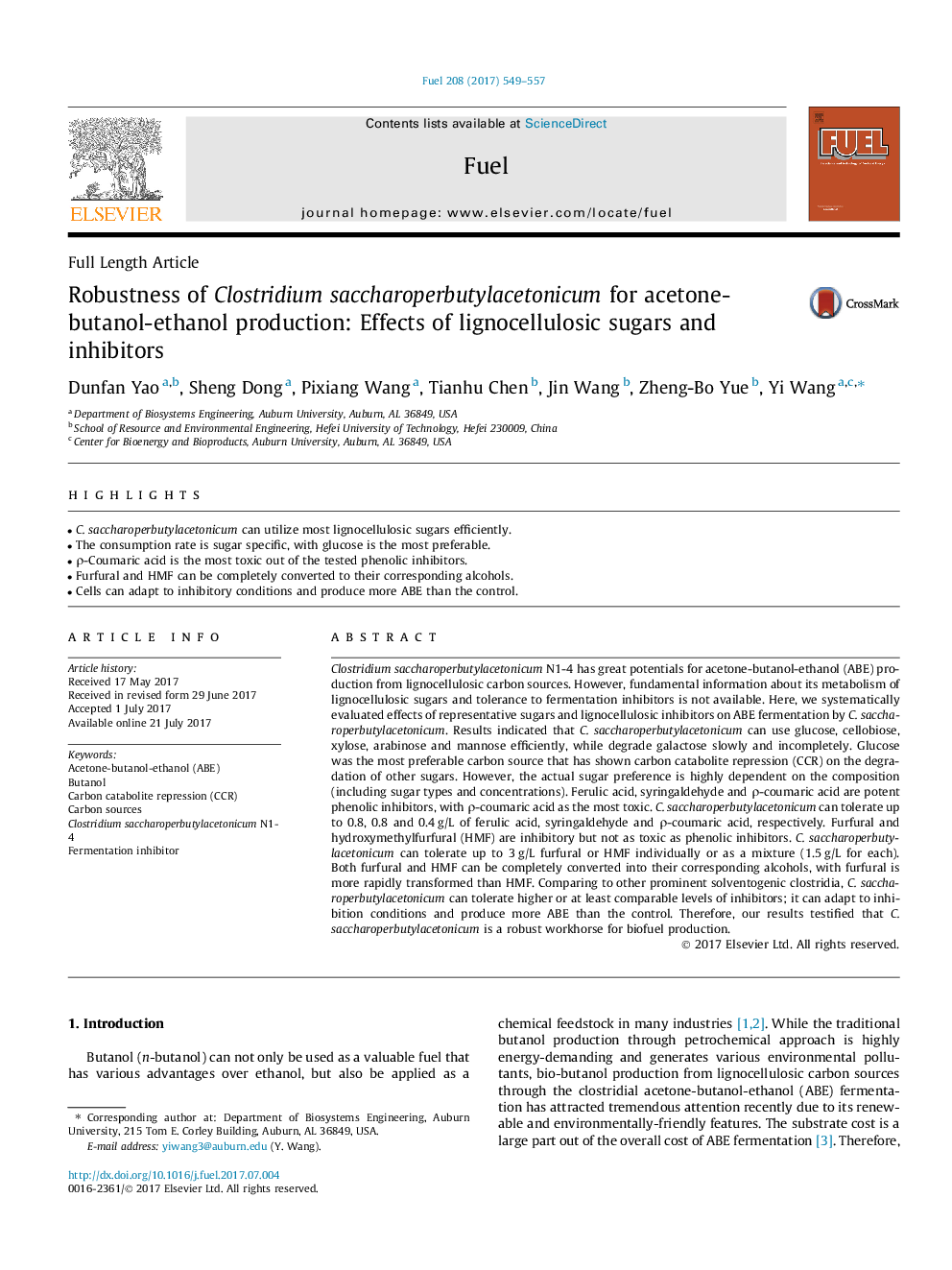| Article ID | Journal | Published Year | Pages | File Type |
|---|---|---|---|---|
| 6474174 | Fuel | 2017 | 9 Pages |
â¢C. saccharoperbutylacetonicum can utilize most lignocellulosic sugars efficiently.â¢The consumption rate is sugar specific, with glucose is the most preferable.â¢Ï-Coumaric acid is the most toxic out of the tested phenolic inhibitors.â¢Furfural and HMF can be completely converted to their corresponding alcohols.â¢Cells can adapt to inhibitory conditions and produce more ABE than the control.
Clostridium saccharoperbutylacetonicum N1-4 has great potentials for acetone-butanol-ethanol (ABE) production from lignocellulosic carbon sources. However, fundamental information about its metabolism of lignocellulosic sugars and tolerance to fermentation inhibitors is not available. Here, we systematically evaluated effects of representative sugars and lignocellulosic inhibitors on ABE fermentation by C. saccharoperbutylacetonicum. Results indicated that C. saccharoperbutylacetonicum can use glucose, cellobiose, xylose, arabinose and mannose efficiently, while degrade galactose slowly and incompletely. Glucose was the most preferable carbon source that has shown carbon catabolite repression (CCR) on the degradation of other sugars. However, the actual sugar preference is highly dependent on the composition (including sugar types and concentrations). Ferulic acid, syringaldehyde and Ï-coumaric acid are potent phenolic inhibitors, with Ï-coumaric acid as the most toxic. C. saccharoperbutylacetonicum can tolerate up to 0.8, 0.8 and 0.4Â g/L of ferulic acid, syringaldehyde and Ï-coumaric acid, respectively. Furfural and hydroxymethylfurfural (HMF) are inhibitory but not as toxic as phenolic inhibitors. C. saccharoperbutylacetonicum can tolerate up to 3Â g/L furfural or HMF individually or as a mixture (1.5Â g/L for each). Both furfural and HMF can be completely converted into their corresponding alcohols, with furfural is more rapidly transformed than HMF. Comparing to other prominent solventogenic clostridia, C. saccharoperbutylacetonicum can tolerate higher or at least comparable levels of inhibitors; it can adapt to inhibition conditions and produce more ABE than the control. Therefore, our results testified that C. saccharoperbutylacetonicum is a robust workhorse for biofuel production.
